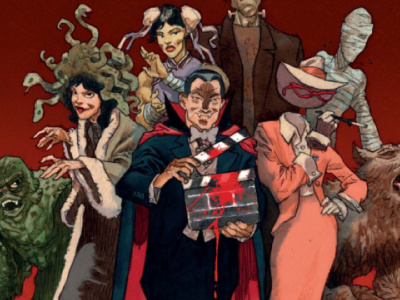In between processing receivings, selling Keyforge, teasing customers with Games Workshop’s new Blackstone Fortress, and celebrating Thanksgiving, I found the time to read some old business books, including 101 of the Greatest Ideas in Management by Auren Uris. Anyone who had a basic business management class in college should remember getting exposed to the concepts of Theory X and Theory Y and then promptly forgetting them once you got out of the class. However, there is a reason that the Theory X and Theory Y ideas of management, first codified during the late 1950s by Professor Douglas McGregor at Massachusetts Institute of Technology’s Sloan School of Management, were included.
McGregor and other management experts of the period noted that neither cash, working conditions, nor punishment worked as a continuing method of incentive. Offering employees a raise, improved working conditions or docking their pay only improved their performance for a comparatively short period of time. McGregor proposed, instead, that attitudes towards employees, and the treatment derived from those attitudes, could consistently influence employee behavior. He eventually developed his ideas into formal philosophies of management based on those assumptions: Theory X and Theory Y
Theory X holds that:
- Humans are inherently lazy and will shun work if they can.
- People must be directed and controlled to be impelled to work as the company requires.
- The average human prefers direction, wishes to avoid responsibility, has comparatively little ambition and desires security.
Theory Y holds that:
- Physical effort expended at work is as natural to humans as that expended at play or rest.
- People will exercise self-control in the service of objectives which they accept.
- Under encouragement, the average person learns to accept and even seek out responsibility.
- People generally have the capacity to exercise imagination, ingenuity and creativity.
There are pros and cons to both approaches. Although McGregor leaned toward Theory Y in his attitude toward management, he and other management experts would point out that, as a practical matter, it does not matter which theory of human nature is "correct" but rather which one produces better results in a given situation. In general, in most retail operations, Theory X is a lot easier to implement than Theory Y is, especially given the high average rate of turnover (around 300%) among retail staff. Using Theory X, you give your staff very clear directions, telling them what you want the outcome to be and how you want them to achieve it. Many employees are most comfortable when given very clear directions and close supervision, since they do not have to worry that their vision of the outcome differs from that of their supervisor’s. Their job satisfaction can improve in a structured environment.
Under Theory Y, employees are given far less direct supervision. Instead they are given outcomes and guidelines but allowed to reach those objectives through their own decisions. This method often proves more time consuming and can lead to employees making what management considers bad decisions, even though the desired outcomes are reached. In a case like this, under Theory Y, instead of punishing the employee for the decision, management would need to explain why that decision was wrong and how to improve it for next time.
Most successful stores and managers incorporate elements of both Theory X and Y. Employees are expected to follow certain procedures when opening the store, making a sale, checking in merchandise and other standardized activities (Theory X). However, employees who have demonstrated the ability often are encouraged to develop in-and-out-of-store activities, create displays, or research and order new products (Theory Y). A good manager needs to understand both theories and recognize how to utilize them to more effectively utilize staff members.
The opinions expressed in this column are solely those of the writer, and do not necessarily reflect the views of the editorial staff of ICv2.com.









